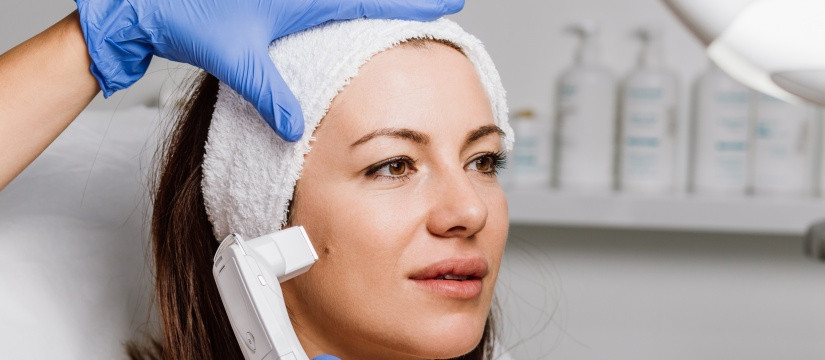Moles, also known as nevi, are common skin growths that can appear anywhere on the body. While most moles are benign and harmless, some may require removal due to changes in their appearance or other factors. Understanding when a mole needs to be evaluated by a healthcare professional is crucial for maintaining skin health. This article outlines the signs that indicate a mole may need to be removed and provides guidance on what to do next.
Understanding Moles
Moles are clusters of pigment-producing cells (melanocytes) that can vary in size, shape, and color. They can be flat or raised, and some may have hair growing from them. Moles are generally classified into three categories:
- Common Moles: Typically small, round, and evenly colored. These are usually harmless.
- Atypical Moles: Larger than average, irregular in shape, and may have uneven color. These moles can indicate a higher risk of skin cancer.
- Congenital Moles: Present at birth, these can vary in size and may have an increased risk of developing into melanoma.
Understanding these types can help you monitor changes in your moles and identify potential concerns.
Signs That a Mole Needs to Be Removed
1. Changes in Size or Shape
One of the primary signs that a mole may need to be removed is a change in its size or shape. If a mole appears to grow larger or starts to change from a round shape to an irregular one, it should be evaluated by a dermatologist.
2. Color Changes
Moles that change color, particularly those that become darker or develop uneven coloring, should be examined. A mole with multiple shades of brown, black, red, or white may be a cause for concern.
3. Irregular Borders
A mole with irregular, jagged, or blurred borders is often classified as atypical. Common moles typically have smooth, even borders. If you notice that a mole's edges are not well-defined, it may warrant further investigation.
4. Itching or Bleeding
If a mole becomes itchy, painful, or starts to bleed, it could indicate a problem. While some itching may be benign, persistent or severe symptoms should not be ignored. Bleeding can be particularly concerning and should prompt immediate medical attention.
5. Changes in Texture
Moles that change in texture—becoming scaly, crusty, or developing a hard surface—should be assessed by a healthcare professional. These changes may indicate underlying issues that need to be addressed.
6. New Moles Appearing After Age 30
While it's normal to develop new moles during childhood and adolescence, new moles that appear after the age of 30 should be evaluated. The emergence of new moles later in life can be a sign of increased risk for skin cancer.
7. Family History of Skin Cancer
If you have a family history of skin cancer, it's essential to monitor your moles closely. Regular skin checks by a dermatologist are recommended for those at higher risk.
8. Personal History of Skin Cancer
Individuals with a personal history of skin cancer should be vigilant about any changes in existing moles or the appearance of new ones. Regular follow-ups with a dermatologist are crucial for early detection.
What to Do If You Notice Concerning Changes
1. Schedule a Dermatology Appointment
If you observe any of the above signs, the first step is to schedule an appointment with a dermatologist. They will perform a thorough examination of your skin and moles and may recommend a biopsy if there is a cause for concern.
2. Document Changes
Before your appointment, it can be helpful to document any changes you’ve noticed in your moles. Take photographs and make notes about when the changes occurred and any accompanying symptoms. This information can assist your dermatologist in making an accurate assessment.
3. Avoid Self-Diagnosing
While it's important to monitor your moles, avoid self-diagnosing. Many skin conditions can appear similar, so it's crucial to consult a professional for an accurate diagnosis.
Frequently Asked Questions (FAQ)
1. How often should I check my moles?
It’s recommended to perform self-examinations every month. Regularly checking your skin can help you notice any changes early.
2. What is the ABCDE rule?
The ABCDE rule is a guideline to help identify potential skin cancer: A for Asymmetry, B for Border irregularity, C for Color variation, D for Diameter larger than 6mm, and E for Evolving in size or shape.
3. Can I remove a mole myself?
Self-removal of moles is not advised. Always consult a healthcare professional for safe removal and proper evaluation.
4. What happens during a dermatology appointment?
A dermatologist will examine your moles, possibly perform a biopsy, and discuss any necessary treatment options.
5. Are all moles dangerous?
Most moles are harmless; however, changes in a mole can indicate potential issues. Regular monitoring is essential for skin health.
6. How can I protect my skin from developing new moles?
Wearing sunscreen, avoiding excessive sun exposure, and maintaining skin health can help reduce the risk of developing new moles.
7. What should I do if I have a family history of skin cancer?
If you have a family history of skin cancer, schedule regular dermatology appointments for skin checks and discuss your risk factors with your healthcare provider.
8. How long does it take to get biopsy results?
Biopsy results typically take anywhere from a few days to a couple of weeks, depending on the lab and the complexity of the tests.
9. Can moles change color due to sun exposure?
Yes, sun exposure can darken existing moles, but significant changes in color should be evaluated by a dermatologist.
10. What is the best way to monitor my moles?
Take photos of your moles and track any changes in size, color, or shape over time. This can help you stay aware of any potential issues.
 Clinic Booking
Clinic Booking


 No Record
No Record